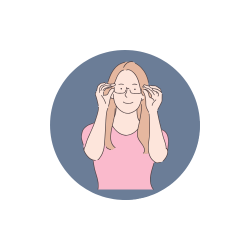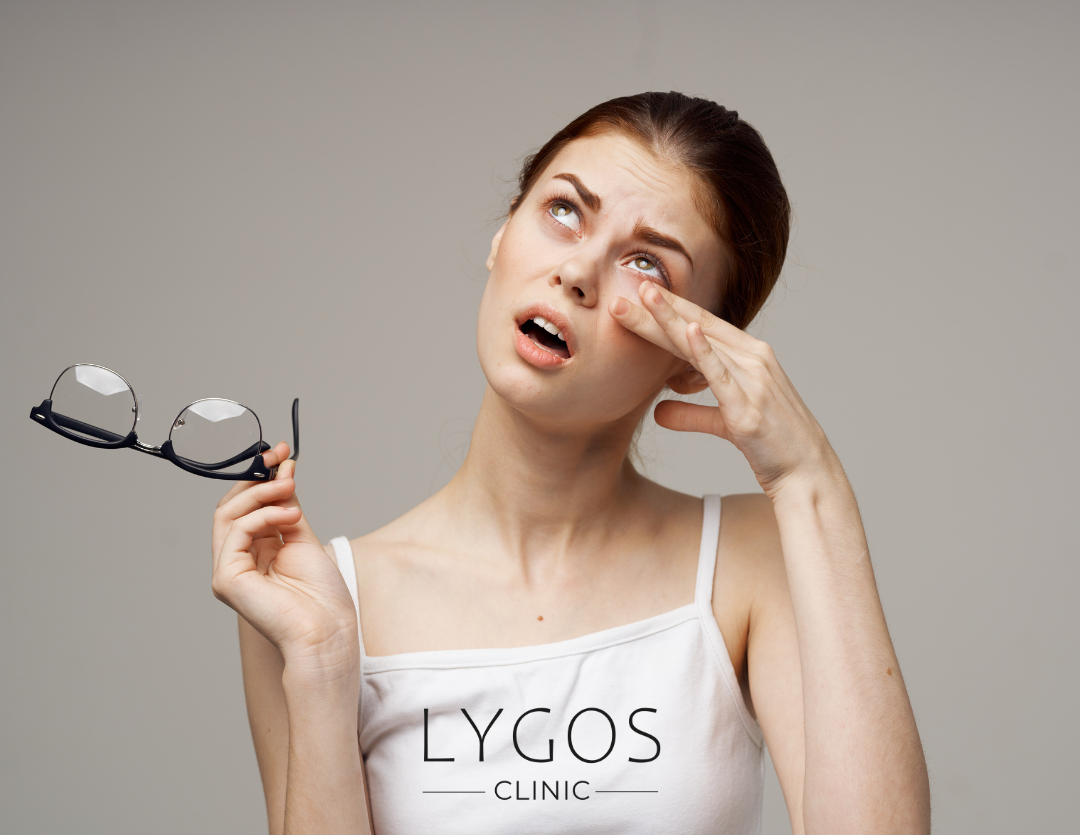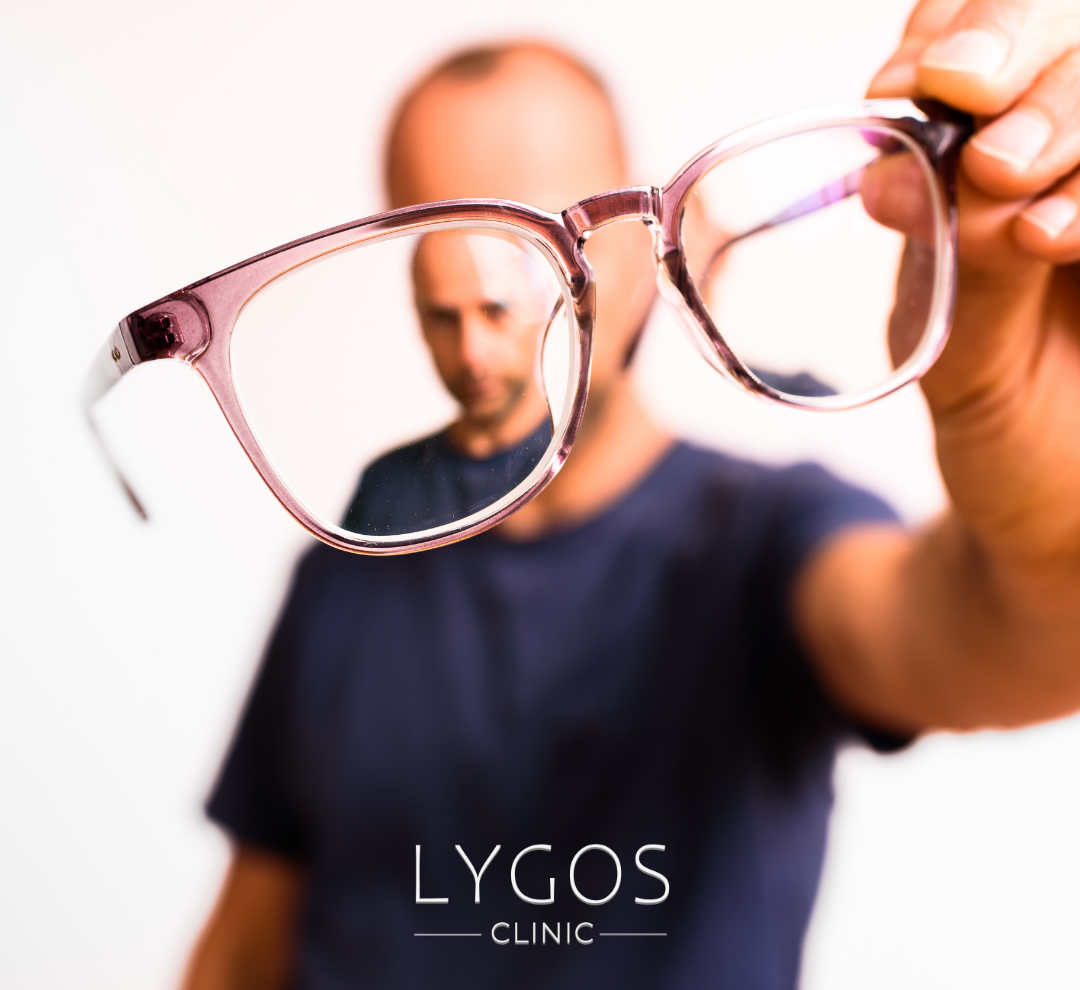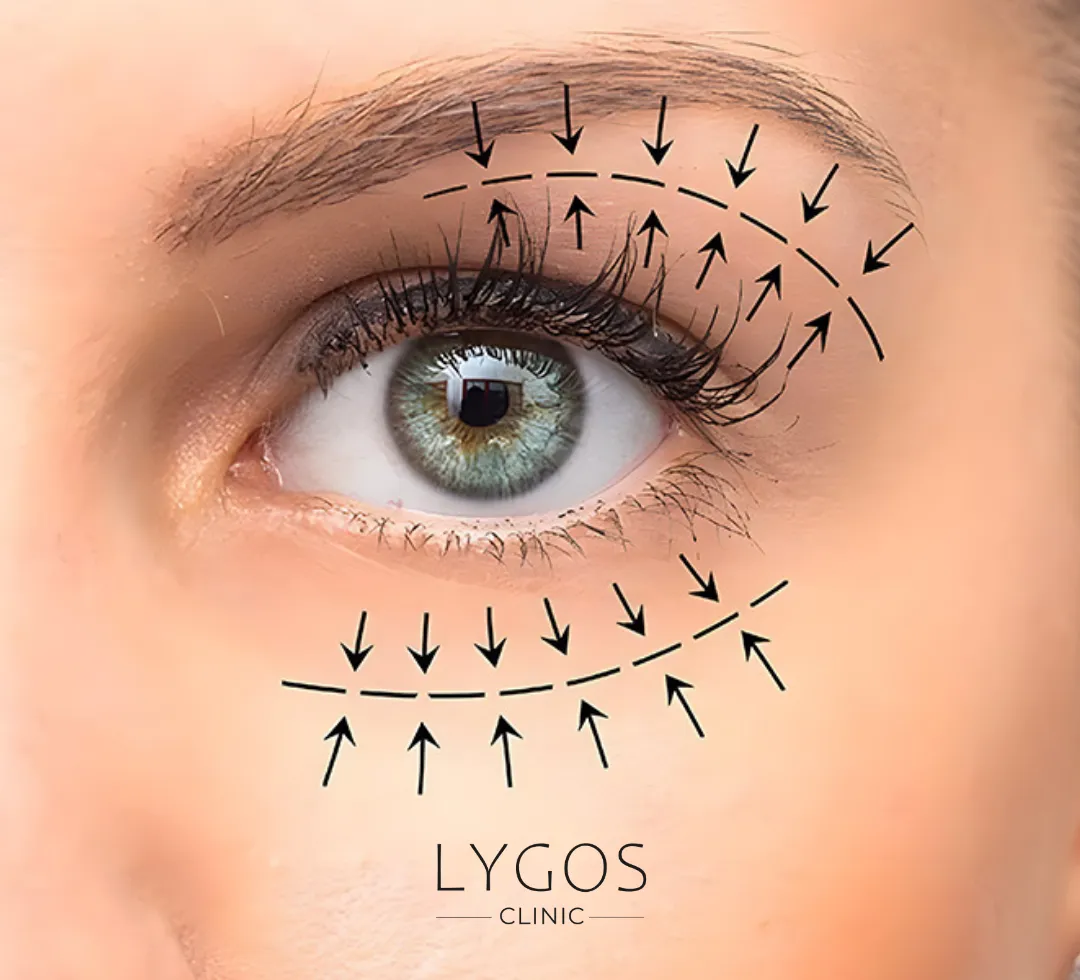What is Astigmatism?
This can cause various difficulties in daily life. The degree of astigmatism varies from person to person. In some cases, it can be treated with corrective lenses such as glasses or contact lenses. In more severe cases, laser surgery can be used to improve the quality of vision. It should be kept in mind that astigmatism can be congenital due to genetic factors, but can also develop as a result of factors such as aging, eye injuries or eye surgery. Regular eye examinations are of great importance for early diagnosis of astigmatism and determination of appropriate treatment methods.
Get a Free Consultation
Choose Your Topics
What are the Symptoms of Astigmatism?
- Blurred or Distorted Vision: The most obvious symptom of astigmatism is that it is difficult to see clearly at all distances. Objects at both near and far distances may appear blurred or distorted.
- Headaches: The eyes are constantly trying to focus, which can lead to headaches. This is especially common after intense visual activities.
- Eye Shift: Excessive shifting of the eyes is a common problem in people with astigmatism. This is a result of the eyes struggling to focus.
- Eye Fatigue: Eyes can get tired quickly during activities such as reading for long periods of time or using a computer. This fatigue is caused by the constant effort of the eye muscles.
- Difficulty Driving at Night: People with astigmatism may experience difficulties due to light glare and blurriness, especially when driving at night.
- Double Vision: In severe cases of astigmatism, a single object may be seen as two or more.
How to Treat Astigmatism?
Mild cases of astigmatism may not require treatment. However, there are various treatment methods for more severe astigmatism. So, how is astigmatism treatment done?
Eyeglasses: Glasses can be given first in the treatment of astigmatism. These glasses contain special cylindrical lenses and correct vision by providing additional power in certain parts. Single-focal lenses provide clear vision at any distance. However, bifocal or progressive lenses may be required for patients with presbyopia over the age of 40.
Contact Lens: Some individuals have better vision with contact lenses instead of glasses. Contact lenses offer clearer vision and a wider field of vision. However, they require regular cleaning and care to maintain eye health. Standard soft contact lenses may not be effective in correcting astigmatism. Special soft toric contact lenses can correct many types of astigmatism. Rigid gas permeable contact lenses can provide better vision by compensating for the irregular shape of the cornea.
Orthokeratology: Orthokeratology (ortho-k) is a method in which rigid contact lenses are used to reshape the cornea. The patient wears these lenses for a set period of time each day, usually at night. People with moderate astigmatism can achieve clear vision without lenses during the day with this treatment. However, orthokeratology does not offer a permanent solution. When lens wear is stopped, vision returns to normal.
Laser Surgery: Astigmatism can also be corrected by reshaping the cornea with LASIK (laser in situ keratomileusis) or PRK (photorefractive keratectomy). These methods correct the eye defect by removing tissue from the layers of the cornea. PRK is a more complex procedure that is preferred in patients with thin corneas and therefore cannot undergo LASIK.
The most appropriate method for the treatment of astigmatism is decided after a detailed evaluation with your ophthalmologist. Since each individual's eye structure and needs are different, the treatment plan should be determined individually.


First Step
The ophthalmologist performs an eye examination to confirm astigmatism. In addition, tests such as visual acuity and corneal shape are performed.

Second Step
Special lenses are used to correct astigmatism.

Step Three
Toric contact lenses offer an alternative solution for astigmatism.

Step Four
Methods such as Lasik or PRK provide permanent correction.

Step Five
Glasses or lenses are prescribed and applied to the patient.

Step Six
If preferred, a laser procedure is performed. Anesthesia is applied and the cornea is reshaped.

Step Seven
To protect your eyes, you should follow the doctor's recommendations.

Who is Suitable for Astigmatism Treatment?
Astigmatism treatment is suitable for many people who have problems with their eyes. Astigmatism treatment is especially suitable for people who have started to see blurred. However, this method can also be preferred for patients who often rub their eyes to clarify their eyes.
People with headaches may have problems such as astigmatism in their eyes. Therefore, astigmatism treatment can be performed for people with headaches. It should be noted that the doctor will decide who is suitable for astigmatism treatment. By testing the correct focusing of the eyes on light and visual acuity, the best eye surgery method for you can be determined.
What Happens if You Don't Wear Glasses for Astigmatism?
Eyeglass lenses are specially designed to correct astigmatism, which leads to blurred vision. They correct this visual impairment caused by the irregular shape of the cornea or lens. The use of glasses is the most common and simple method in the treatment of astigmatism. So, what happens if you do not wear glasses for astigmatism? Wearing glasses does not increase or decrease the degree of astigmatism.
People who do not wear glasses cannot get a clear vision. However, it should be known that not wearing glasses does not cause astigmatism to progress or regress. Glasses are only a tool to provide clearer and more comfortable vision. Wearing glasses does not change the course of astigmatism. Therefore, it is important for people with astigmatism to wear glasses for clear vision, but wearing glasses will have no effect on the degree of astigmatism.


Non-Surgical Astigmatism Treatment
More than one method can be used for non-surgical astigmatism treatment. In astigmatism treatment where glasses are preferred first, the procedure may vary according to the needs of the patient. These glasses provide additional power in the area as they contain special cylindrical lenses.
However, bifocal or progressive lenses may be required for patients with presbyopia over the age of 40. Another non-surgical astigmatism treatment method is contact lenses. Some patients can see better with contact lenses. It is very important for a person who prefers this treatment to clean the lenses regularly to maintain eye health. Orthokeratology can also be applied as a non-surgical astigmatism treatment.
In this method, which reshapes the cornea, hard contact lenses are used. The patient wears these lenses for a certain period of time every day, usually at night. People with moderate astigmatism can achieve clear vision without lenses during the day with this treatment. However, orthokeratology does not offer a permanent solution. When lens wear is stopped, vision is restored.
No Touch Laser Astigmatism Treatment
The no touch laser method stands out as a safe and effective option in the treatment of defects such as astigmatism. The cornea is a transparent tissue located at the very front of the eye. This tissue is reshaped with no touch laser astigmatism treatment.
The term “No Touch Laser”, which is widely known among the public, means that this method does not require physical contact of the surgeon. No touch laser astigmatism treatment corrects visual defects by precisely reshaping the tissues under the cornea. Before the procedure, the epithelium on the surface of the cornea is mapped. This map allows the treatment to be planned accurately.
This method first vaporizes the epithelium and then shapes the corneal layer to correct the refractive error in the eye. Each patient's eye structure is different. Therefore, a detailed eye examination is necessary to determine whether no touch laser treatment is suitable for you. Your ophthalmologist will help you determine the best treatment method. The no touch laser method is a modern treatment option that offers effective results with the right patient selection and proper planning.

Myopia Astigmatism Treatment
Hyperopia Astigmatism Treatment

Astigmatism Treatment Costs
Another curious issue about astigmatism treatment is the cost of this operation. Astigmatism treatment costs may vary depending on the procedure applied and the health institution where the procedure is performed.
Individuals considering this method should consider their own health status and risk factors. Therefore, it is important to have a detailed consultation with a specialist. The information and support you will receive from health institutions and experts will help you make the best decision about astigmatism treatment costs.
Get a quote for astigmatism treatment
Frequently Asked Questions About Astigmatism
BLOG

Is Breathing Through the Mouth Harmful?
Chose Your Topic Is Breathing Through the Mouth Harmful? Breathing is one of the most fundamental needs of life. However,

Does Rice Water Make Hair Grow? | Benefits of Rice Water
Chose Your Topic Does Rice Water Make Hair Grow? Natural methods in hair care have become quite popular in recent

Breast Lump | Types: Benign, Malign and Causes | LYGOS 2025
Breast Lump While cancer stands out as one of the most common health problems today, early diagnosis rates are also





